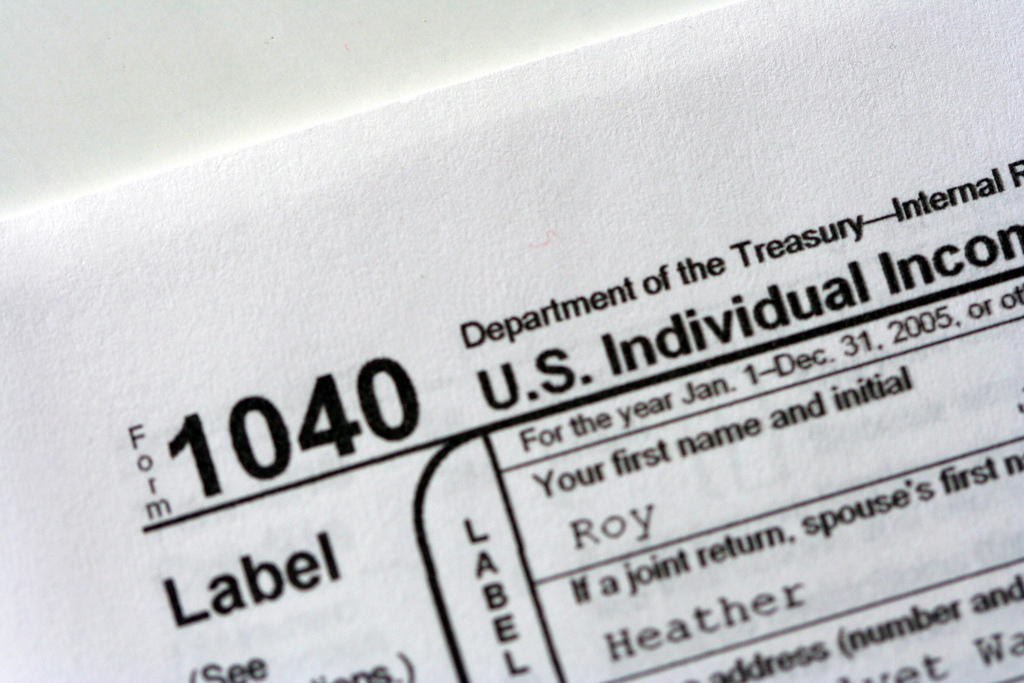
The cost of filing federal income tax returns has risen steadily since the 1980s, partly because Americans are filing more forms with their returns, a UCLA researcher has found.
The issue: American taxpayers submitted more than 149 million personal income tax returns to the IRS in 2017. For some, filing tax returns can be a stressful, confusing, time-consuming process, especially for those who want to itemize deductions such as mortgage interest, personal property taxes, charitable donations and state and local income taxes.
Itemizing deductions requires effort — gathering receipts and statements and filling out extra tax forms — but can result in a big tax savings. Claiming the standard deduction saves time but means taxpayers may pay more in taxes or receive a smaller tax refund.
It’s no surprise that two-thirds of taxpayers claim the standard deduction and most pay professionals, usually certified public accountants and tax-preparation services, to complete their returns. In 2017, paid preparers filed 56 percent of all individual tax returns, according to the IRS.
So how much does filing taxes cost American taxpayers? A recent study attempts to quantify that cost, including the money people forgo by claiming a standard deduction instead of itemizing.
A study worth reading: “How Taxing Is Tax Filing? Using Revealed Preferences to Estimate Compliance Costs,” a National Bureau of Economic Research working paper, 2017.
Study summary: Youssef Benzarti, an assistant professor of economics at UCLA, examined taxpayer deductions between 1980 and 2006 using a random sample of federal income tax returns. He estimated the cost of itemizing deductions and used that information to estimate the total cost of filing returns. As part of the study, Benzarti surveyed individuals living in a wealthy Los Angeles neighborhood to find out what taxpayers who itemize their deductions believe about the probability and cost of an IRS audit.
His estimates are in 2016 dollars and do not reflect changes related to the Tax Cuts and Jobs Act, approved by Congress in December 2017.
The big takeaways:
- The cost of filing a federal tax return ranged from $175 for taxpayers with lower incomes who file as “single” to $591 for joint filers in the highest income bracket. The cost to taxpayers who filed as head of household was either $270 or $458, depending on their incomes.
- The aggregate cost of filing federal tax returns increased from $150 billion nationally in 1984 to $200 billion in 2006.
- The increase was partly due to population growth, but it also resulted from a higher number of people filing other tax forms in addition to their Form 1040 tax form. The proportion of forms filed that were not Form 1040s rose by 15 percent between 1984 and 2009.
- Taxpayers who filed returns close to the April deadline tended to forgo more deductions.
- Benzarti hypothesized that one reason some taxpayers may claim the standard deduction instead of itemizing is because they mistakenly believe IRS audits are more likely when itemizing. But his findings suggest few taxpayers forgo itemizing because of a fear of audits. Survey participants did overestimate the possibility of an IRS audit, however. They believed the probability to be 8.72 percent, on average. That’s 7.9 times higher than the actual probability.
- The cost of filing reached 1.2 percent of Gross Domestic Product in the most recent years.
Other resources:
- The IRS publishes trend data on the number of people filing returns and whether they file a paper or electronic return. The agency also publishes an annual Data Book, which provides a range of data on topics such as gross collections, refunds, audits and IRS staffing levels.
- The National Society of Accountants conducts a biennial survey to collect data on tax preparation fees for various tax forms and scenarios.
- A number of non-profit or government agencies offer free help filling out tax returns. Among the largest is the Volunteer Income Tax Assistance (VITA) program, which provides assistance to individuals with low-to-moderate incomes, disabilities or limited English language skills. The Tax Counseling for the Elderly program offers free help to senior citizens.
Other research:
- A 2015 study published in the Journal of Public Policy, “The Political Economy of Tax Enforcement: A Look at the Internal Revenue Service from 1978 to 2010,” finds that more tax returns are audited under Democratic presidents.
- A 1989 study in The American Economic Review, “The Compliance Cost of Itemizing Deductions: Evidence from Individual Tax Returns,” found that itemizing tax returns in 1982 cost “$1.44 billion, or $43 per itemizing taxpayer, with the social cost being somewhat higher.”
Photo by John Morgan obtained from Flickr and used under a Creative Commons license.
